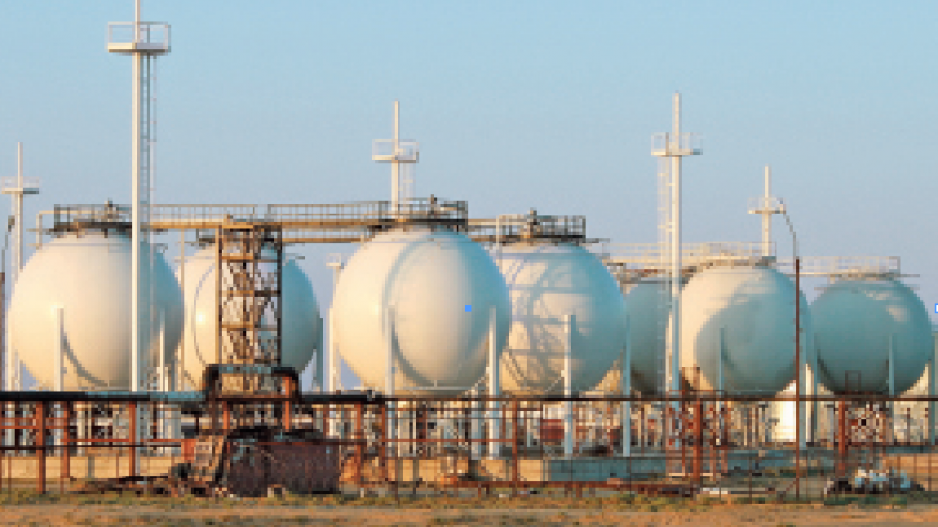When Petronas CEO Shamsul Azhar Abbas warned at last year’s LNG conference in Vancouver that his company’s US$11 billion Pacific NorthWest LNG project was not a slam dunk, it was characterized by some as an attempt to wring tax breaks from government.
The company later announced it would delay a final investment decision – originally expected by the end of 2014 – to the summer of 2015.
If it was brinkmanship, it worked. The B.C. government reduced the tax rate it had originally announced for LNG sales, and in February the federal government announced a special capital cost allowance (CCA) rate for liquefied natural gas plants and associated facilities.
The CCA rates for LNG plants will be boosted to 30% from 8% and will apply to buildings and facilities related to the liquefaction process.
It won’t apply to all natural gas pipelines, but will apply to pipelines that are dedicated to moving liquefied gas.
“It is meant to encourage the LNG sector and investment in that sector because we see it as a great creator of jobs and a strong player in our economy as we go forward,” Minister of National Revenue Kerry-Lynne Findlay recently told Business in Vancouver. “It isn’t just for export – it’s also for use internally in Canada.”
According to Mary Hemmingsen, energy sector lead for KPMG, the CCA would translate into a $700 million tax deferral on a typical $10 billion LNG project.
LNG proponents say the accelerated CCA for the LNG sector should go some way to addressing the concerns companies have over capital costs.
LNG proponents say the federal government’s new tax rates for the LNG sector should help address the concerns companies have over capital costs.
“It helps move the ball in the right direction,” said David Keane, CEO of the BC LNG Alliance, “and it helps provide some fiscal certainty.”
Zoher Meratla, an LNG specialist with CDS Research Ltd., said there’s not much more the provincial or federal government can do to create a competitive investment climate for an LNG industry in B.C.
“I think both the B.C. government [and] the federal government have done everything they could do to help the industry, and it’s just a matter of waiting for the proponents to make their decision.”
But there’s not much either level of government can do about global oil prices – an unexpected wild card that has added uncertainty to LNG projects around the world.
At the end of January, Royal Dutch Shell (NYSE:RDSA) and PetroChina – the same partners involved in the US$40 billion LNG Canada project in Kitimat – pulled the plug on their US$20 billion Arrow LNG project in Australia.
In January, the investment firm Sanford C. Bernstein & Co. threw cold water on U.S. LNG projects and predicted only two major LNG projects would proceed in B.C. – neither of which was Petronas’ Pacific NorthWest LNG.
The firm identified the Shell-PetroChina LNG Canada and the Chevron-Woodside Petroleum Ltd. Kitimat LNG projects as the most likely to get a final investment decision.
Because LNG contracts in Asia have been historically linked to oil prices and because the spread between high oil and low gas prices has shrunk, Asian buyers might expect lower delivered LNG prices.
A year ago, the benchmark linkage for LNG was US$14 or US$15 per MMBtu (one million British thermal units) and it is now in the US$7.50 range, said Colin Coe, an adviser to the Oregon LNG project.
Australian producers are said to be basing their business plans on Asian LNG prices of US$8 to US$11 per MMBtu. But, according to an EY analysis, producers will need a delivered price of US$12 to US$13 per MMBtu to be profitable.
“We now have buyer expectations for a very low price,” Coe said.
“That means that, for any jurisdiction that is a higher-cost jurisdiction, such as British Columbia, they have a real challenge finding a slot in the marketplace.”
B.C.’s higher costs are largely related to the fact that some of the larger LNG projects still need to build multibillion-dollar pipelines across mountain ranges.
In that respect, some of the smaller LNG proposals may have an advantage.
The Woodfibre LNG project in Squamish, for example, has an agreement with FortisBC to access gas from an existing pipeline via a 47-kilometre pipeline extension.
The Douglas Channel LNG project in Kitimat also has access to gas from the Pacific Northern Gas pipeline.



